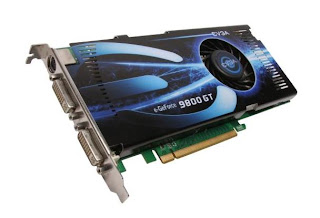 As Gwen Stefani, U2, and Lenny Kravitz know, you have to keep reinventing yourself to stay relevant in an ever-changing world. The HP Pavilion Elite m9550f ($1,199 list) is the latest in a long line of high-end multimedia systems from HP, and unfortunately, even though previous systems have won our esteem and highest honors, the m9550f comes across as competent yet unexciting. To stick with the musical analogy, the m9550f is like the 1970s Elvis: still pretty entertaining and able to perform, but largely coasting along on a reputation and the glory of what once was.
As Gwen Stefani, U2, and Lenny Kravitz know, you have to keep reinventing yourself to stay relevant in an ever-changing world. The HP Pavilion Elite m9550f ($1,199 list) is the latest in a long line of high-end multimedia systems from HP, and unfortunately, even though previous systems have won our esteem and highest honors, the m9550f comes across as competent yet unexciting. To stick with the musical analogy, the m9550f is like the 1970s Elvis: still pretty entertaining and able to perform, but largely coasting along on a reputation and the glory of what once was.The m9550f's case is the same as the one for the m9040n we saw back in 2007. Though dated, it is totally functional, with a rubberized tray on the top to hold your MP3 player, external hard drive, or digital camera during sync sessions. What's more, it still has the same excellent Personal Media Drive and Pocket Media Drive bays. Both let you use HP's hard drive cartridges to boost the 1TB of installed storage in the system by up to another 1.5TB (one 1TB Personal Media Drive plus one 500GB Pocket Media Drive, the maximum current capacities).
The features inside the m9550f are both a step forward and a step back. It has a newer Intel Core 2 Quad Q9300 processor (replacing the older Q6600 in its predecessor, the Elite m9400t), 8GB of DDR2 memory (the most you're likely to need as a home user), a 1TB hard drive, 802.11a/b/g/n Wi-Fi, and a more-powerful midrange ATI Radeon HD 4850 graphics card. All of these components are improvements over those we saw in the m9400t. However, to add these features and keep the price similar to that of the m9400t, HP had to leave something out. Unlike the m9400t, the m9550f lacks a Blu-ray drive (so no high-def movies from Netflix or Blockbuster) and an ATSC TV tuner (no over-the-air high-def).
Like all HP Pavilion PCs, the m9550f has a load of crapware on it. When I was looking at the m9400t, the extra multimedia-oriented hardware made up for the points that were lost to crapware. That's not the case with the m9550f. The good old Microsoft Office 2007 60-day trial is there, as are a Norton Internet Security 60-day trial (the m9400t came with 15 months), ninedesktop icons for stuff like eBay, and ads for Juno and NetZero dial-up ISPs—which doesn't make sense, as the m9550f lacks a modem.
Another nit to pick is that the chassis is packed to the gills, leaving only one PCI slot and one PCIe x1 card slot free. The interior is messy, with wires covering up the motherboard and most of the free space. I don't expect custom hand-routed wires in a $1,200 system, but even at that, it's pretty unruly in there. Luckily, you'll have few reasons to open the chassis, since hard drives can be plugged into the Media Drive bays.
The system's multimedia performance is decent. The m9550f finished the Windows Media Encoder test in 43 seconds, coming in a good bit under the 1-minute average score for a multimedia system. It was also able to complete the Photoshop CS4 test in 1:33, good for a high-end multimedia system. The current Editors' Choice Dell Studio XPS 435 completed the same tasks in 36 seconds and 1:12, respectively. The m9550f's 3D performance is mediocre—45 frames per second (fps) at a resolution of 1,280 by 1,024 is too jerky for playing Crysis smoothly, though the 55 fps the m9550f scored on World in Conflict at the same resolution is playable. Both games are unplayable at 1,920 by 1,200, but that's okay; the system is multimedia-oriented, not a gaming rig. If you want to play games on this system, you'll have to use a more modest resolution.
The m9550f is more capable than systems like the cheaper Acer Aspire X1700-U3700A and the Gateway LX6200-01, and is less capable overall than the more expensive Dell XPS 435. Where the m9550f really falls short is in comparison with its predecessor. The m9400t had a few lower-grade components (less memory, slower processor) but had a better bang for the buck with other features like Blu-ray and the 15-month Norton subscription. As for crapware, the Acer and Gateway are also guilty of having too much, but that's a pitfall the Dell avoids. For these tough times, I'd recommend getting a less-expensive system like the Acer if you don't need 3D (or the Gateway if you do), or springing for the Dell if you need higher-end features like Blu-ray and 3D.
The HP Pavilion Elite m9550f is a competent multimedia PC that will serve people well if they already have HP Personal or Pocket Media Drives, but it's ultimately less compelling than other choices. Worse, it's a step backward from its predecessor. The Elite line is just treading water at this point—it's up to HP to update the line to keep it relevant. Although the m9550f's basic hardware is sound, its new features didn't make up for those that were taken away.





 Our HP Pavilion dv2 (dv2-1030us)
Our HP Pavilion dv2 (dv2-1030us)  Build and Design
Build and Design






 Performance
Performance
















